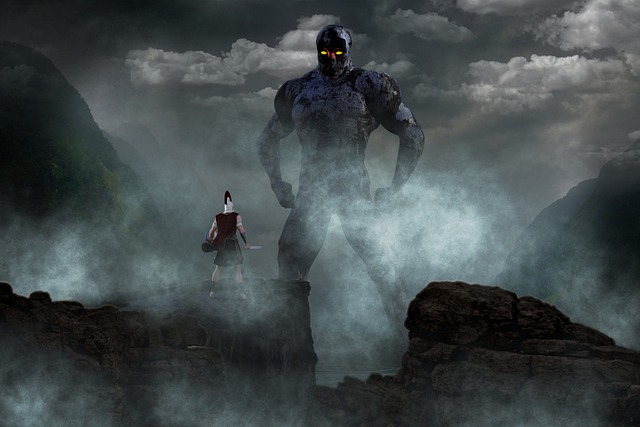Are you eager to learn the secrets of writing a thrilling story? Whether this is your first foray into thriller writing or you’re looking for tips to refine your work and make it even more engaging, it’s important to ensure the story’s central idea is strong. This central unifying element or generic truth found in the story can be one of the most powerful tools in crafting an unforgettable story.
This blog post will explore what is a central idea in a thriller and how it shapes characters and plot twists. We’ll also look at real-world examples of great thrillers to inspire you. So let’s jump right in!
Identify the protagonist’s goals – what do they want to achieve and why?
The protagonist’s goals should be a driving force of the story. In a thriller, these goals usually revolve around some mystery or crime, whether solving the mystery or fighting to prevent an impending disaster.
As you create your story, think about what your protagonist stands to gain (or lose) in their quest, and make sure that it’s something worth fighting for.
Real-world examples of protagonist goals in great thrillers:
– Achieving something tangible: In this story arc, the protagonist sets out on an adventure with a clear objective—such as slaying a dragon or rescuing a princess—and faces obstacles along their journey to reach their ultimate goal. Examples of this would be Frodo’s mission in The Lord of the Rings or Harry Potter’s search for Horcruxes.
The central idea of Lord of the Rings is one of hope and determination. It is a story of valor against overwhelming darkness, good in a time when evil threatens to consume all.
– Overcoming Fear and Insecurity: Many protagonists will have to face down fears and doubts to grow as individuals and reach their potential throughout a story. Simba from The Lion King is a great example – he must overcome his insecurity about becoming king before taking his rightful place as ruler of Pride Rock.
The main point in The Lion King provides an important reminder – that we all have a responsibility towards ourselves and those around us, no matter how big or small our circle may be.
– Saving Others/The World: Perhaps one of the most iconic examples here would be Luke Skywalker from Star Wars; his ultimate goal was saving himself and helping those around him, including Princess Leia and Han Solo, who were crucial allies against Darth Vader’s armies!
The central idea of Star Wars is the power of hope and redemption. Since its debut in 1977 with A New Hope, the story’s theme of the franchise has been good vs. evil.
Analyze the action scenes – what is the purpose of each scene, and how does it lead to a climax?
 7
7
In thrillers, action scenes are essential for keeping the story exciting and driving it forward. Each scene should have a purpose and build tension to keep the reader on their toes.
In addition to action, suspenseful moments should add conflict and pressure on the story’s main characters as they work towards their goal. Ensure the same concept when creating action scenes is logical and consistent, with a clear purpose connected to the plot.
Create twists and turns
Why are these important, and how can they be used?
Twists and turns are an essential part of any thriller story. They help keep the reader guessing while peppering in unexpected storylines that keep them engaged. A well-placed twist or turn can take a story in a new direction, giving it more depth and intrigue.
Using twists, a storyteller can add tension and suspense to the plot, reveal new information about characters, or introduce plot elements that otherwise would have gone unnoticed.
When incorporating twists into your writing, it’s important to consider their impact on your story. Twists should be used strategically, not just to shock or make the reader curious.
Keep your readers guessing by leaving out key information until the right moment, and make sure that any twists you use work in harmony with the overall narrative.
Examine the internal or external conflict

What is at stake?
Conflict can come in many forms, from internal struggles such as decisions or identity crises to external obstacles like physical danger or intense rivalry between characters.
Frequently in literature and film stories, we find examples of individuals faced with decisions where the consequences could cost them great personal losses, such as friends and family members; these types of stakes can be particularly effective as they make it more difficult to determine what action to take as each option entails serious risks to those closest to them.
For example: In Stephen King’s horror novel The Shining (1977), young Danny Torrance must decide whether he should protect his father from himself by hiding or confronting him about his increasingly dangerous actions.
The central theme expressed in The Shining is one of personal accountability and personal responsibility.
Examining the internal conflict methodically and developing the stakes accordingly will ensure that your story is full of thrilling suspense.
Uncover hidden motives – who is pulling the strings, and why are they interested in the outcome?
Adding mystery to a thriller story can be done by introducing hidden motives. It is important to consider who the puppet master is and their agenda, as this can create additional suspense.
In addition, the puppeteer’s reasons for wanting to manipulate the characters or events should be explored, as it will help determine the story’s stakes and add an interesting twist.
Trace relationships between characters

How do they interact, and how do they impact each other?
The relationships between characters are crucial to any story. Establishing a dynamic between the main characters and their respective allies and enemies will help bring your plot to life.
Each relationship should be explored in depth, delving into how they interact and how their words and actions affect each other’s decisions.
Follow the trail of clues – are there any unexpected twists that could lead to a shocking ending?
Clues are key to any mystery or thriller. By tracking the clues, readers can understand where the story is headed and attempt to figure out unexpected twists that could lead to a shocking ending.
While some of these clues may be obvious, others may be hard-to-find, leading the reader on an engaging journey as they attempt to unravel the mystery.
Conclusion
The protagonist’s journey is an intricate path full of detail. With each challenging step, there are questions to answer and motives to uncover, all leading up to the story’s climax. Each character’s objective, obstacle, action scenes, and relationships help unite this complex and sometimes chaotic tale into a cohesive whole.
Thank you for taking the time to read. May you find success and joy in all that you create.
If you’re working on your first novel and are looking for more help with your writing, please check out my other articles at https://ullahakanson.com/blog/
Best of luck with your writing!
Ulla
www.ullahakanson.com

